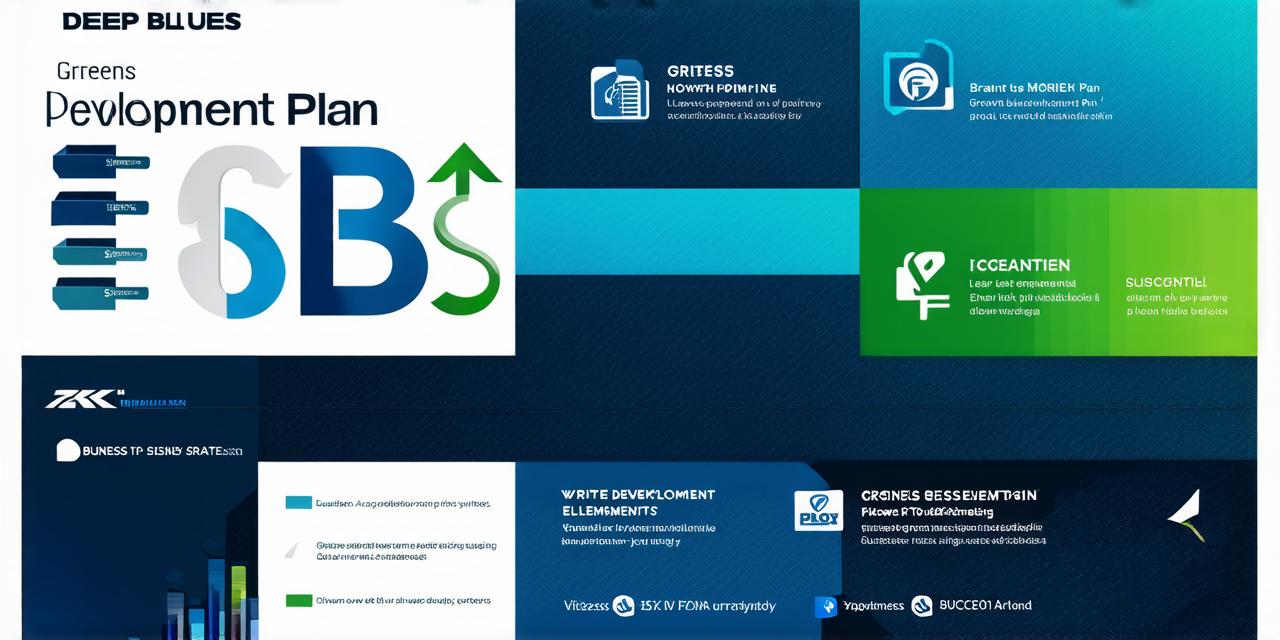As a development services provider, you know that having a solid business development plan is essential to your success. But with so many different approaches and strategies available, it can be challenging to know where to start. In this article, we’ll guide you through the key steps for writing a successful business development plan and provide real-life examples to illustrate each step.

1. Define Your Target Market
Before you can start developing your business, you need to have a clear understanding of your target market. This includes identifying the specific industries or sectors that you want to serve, as well as the types of businesses and organizations that are most likely to be interested in your services. For example, if you provide consulting services to small businesses, you’ll want to focus on reaching out to business owners in those industries who are looking for ways to improve their operations and grow their revenue.
1. Identify Your Unique Selling Points
Once you have a clear understanding of your target market, it’s time to identify what sets you apart from the competition. What unique skills or expertise do you bring to the table? What services or offerings are you able to provide that others can’t? By answering these questions, you can create a strong value proposition that will help you stand out in the marketplace and attract potential clients.
1. Develop Your Marketing Strategy
With your target market and unique selling points identified, it’s time to develop a marketing strategy that will help you reach those potential clients. This might include creating a website, using social media platforms like LinkedIn or Twitter to connect with other professionals in your field, or attending industry events and conferences to network with potential clients.
1. Create a Sales Plan
Once you’ve identified your target market and developed a marketing strategy, it’s time to create a sales plan that will help you convert those leads into paying customers. This might include setting specific sales goals for the year, identifying key decision-makers at potential clients, and developing a sales pitch or proposal that clearly outlines the benefits of working with your company.
1. Establish Metrics for Success
Finally, it’s important to establish metrics for success that you can use to track your progress and measure the effectiveness of your business development plan. This might include tracking website traffic, measuring the number of leads generated through your marketing efforts, or monitoring sales revenue and profitability. By regularly reviewing these metrics, you can make informed decisions about how to improve your business development plan and achieve your growth goals.
Real-Life Examples of Successful Business Development Plans
To illustrate the key steps for writing a successful business development plan, let’s look at some real-life examples of companies that have successfully implemented these strategies:
- HubSpot: A marketing and sales software company that has built a strong reputation for helping businesses grow their revenue through effective inbound marketing strategies. By creating valuable content that attracts potential clients to their website, as well as leveraging social media and other online channels to reach out to potential customers, HubSpot has been able to generate significant leads and grow its customer base.
- Salesforce: A cloud-based software company that has built a strong reputation for providing innovative solutions to businesses of all sizes. By focusing on building strong relationships with its clients and providing ongoing support and training, Salesforce has been able to retain a high level of customer satisfaction and generate significant revenue through recurring subscriptions.
- Amazon: A global e-commerce giant that has built a successful business development plan by investing heavily in research and innovation. By constantly seeking out new technologies and services that can help it improve its operations and better serve its customers, Amazon has been able to maintain its position as a leader in the industry and generate significant growth over time.
